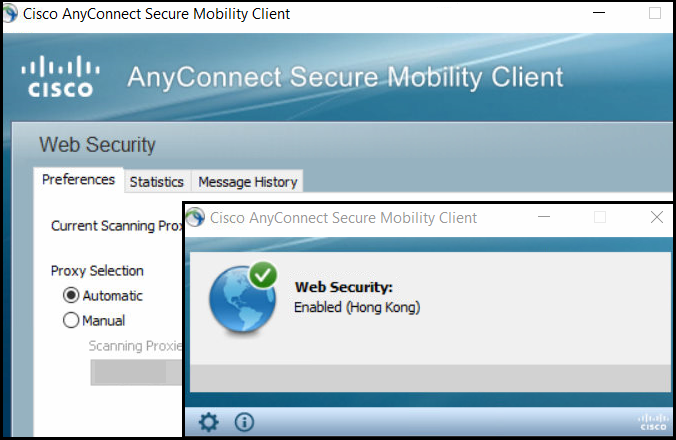- Cisco Secure Mobility Client Vpn
- Cisco Anyconnect Secure Mobility Vpn
- Cisco Anyconnect Secure Mobility Client Connection Disabled Settings
- Cisco Anyconnect Mobility Client Download 4.5
Overview
Jul 11, 2020 Solution 4: Select the option Connect to current Network in AnyConnect VPN. Sometimes, the Any Connect client VPN fluctuates between different networks, so you have to select the option of connecting to the current network only. This might fix the issue for you. Here’s how to do that: Open the AnyConnect Client, and where you see the Network. We are using VPN PULSE SECURE 5.3.4 and Cisco AnyConnect Secure Mobility Client 3.1.13015 on workstations with Windows 10. After disconnecting Cisco VPN we can't connect by Pulse without rebooting OS. Pulse Client is trying to connect few times and finishing with error: Failed to setup virtual adapter (Error:1205). Thanks for any help.
Cisco Secure Mobility Client Vpn
Stanford's VPN allows you to connect to Stanford's network as if you were on campus, making access to restricted services possible. To connect to the VPN from your Windows computer you need to install the Cisco AnyConnect VPN client.
Two types of VPN are available:
- Default Stanford (split-tunnel). When using Stanford's VPN from home, we generally recommend using the Default Stanford split-tunnel VPN. This routes and encrypts all traffic going to Stanford sites and systems through the Stanford network as if you were on campus. All non-Stanford traffic proceeds to its destination directly.
- Full Traffic (non-split-tunnel). This encrypts all internet traffic from your computer but may inadvertently block you from using resources on your local network, such as a networked printer at home. If you are traveling or using wi-fi in an untrusted location like a coffee shop or hotel, you may wish to encrypt all of your internet traffic through the Full Traffic non-split-tunnel VPN to provide an additional layer of security.
Libdvdcss pkg mac download. You can select the type of VPN you want to use each time you connect to the Stanford Public VPN.

Cisco Anyconnect Secure Mobility Vpn

Install the VPN client
- Download the Cisco AnyConnect VPN for Windows installer.
- Double-click the InstallAnyConnect.exe file.
- When a message saying the Cisco AnyConnect client has been installed, click OK.
Cisco Anyconnect Secure Mobility Client Connection Disabled Settings


Cisco Anyconnect Mobility Client Download 4.5
Connect to the Stanford VPN
- Launch the Cisco AnyConnect Secure Mobility Client client.
If you don't see Cisco AnyConnect Secure Mobility Client in the list of programs, navigate to Cisco > Cisco AnyConnect Secure Mobility Client. - When prompted for a VPN, enter su-vpn.stanford.edu and then click Connect.
- Enter the following information and then click OK:
- Group: select Default Stanford split- tunnel (non-Stanford traffic flows normally on an unencrypted internet connection) or Full Traffic non-split-tunnel (all internet traffic flows through the VPN connection)
- Username: your SUNet ID
- Password: your SUNet ID password
- Next, the prompt for two-step authentication displays. Enter a passcode or enter the number that corresponds to another option(in this example, enter 1 to authenticate using Duo Push to an iPad). Then click Continue.
- You may have to scroll down the list to see all of your options.
- If your only registered authentication method is printed list, hardware token, or Google Authenticator, the menu does not display. Enter a passcode in the Answer field and click Continue.
- Click Accept to connect to the Stanford Public VPN service.
- Once the VPN connection is established, a message displays in the lower-right corner of your screen, informing you that you are now connected to the VPN.
Disconnect from the Stanford VPN
- In the notification area, click the Cisco AnyConnect icon if it is displayed. Otherwise, go to your list of programs and click Cisco AnyConnect Secure Mobility Client.
- At the prompt, click Disconnect.

